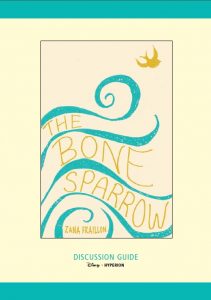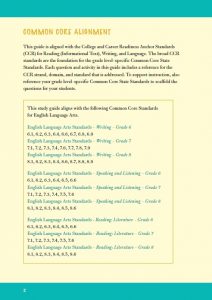Since its release late last year, Zana Fraillon’s THE BONE SPARROW has garnered critical acclaim with starred reviews in Publishers Weekly and Booklist alongside industry awards such as the CCBC Choices 2017 list from the Cooperative Children’s Book Center and the shortlist for the Carnegie Medal in the UK. This debut middle-grade novel tells the story of Subhi, a young Rohingya refugee born in an Australian detention center after his mother and sister fled the violence of their distant homeland. Every night, the faraway whales sing to him, the birds tell him their stories, and the magical Night Sea from his mother’s stories brings him gifts. As Subhi grows, his imagination threatens to burst beyond the limits of the fences that contain him. One night, it seems to do just that.
In the accompanying educator’s guide, the author was able to shed light into how she first learned of the very real plight of the Rohingya, and how her research helped shape this unforgettable story. The full guide for your classroom or library, including Common Core guidelines and discussion questions about THE BONE SPARROW, is available FOR FREE RIGHT HERE. The Q&A with author Zana Fraillon is presented below to help get the discussion started.
How did you first learn about the detention centers for the Rohingya? How long have they been in place in Australia?
Australia has had immigration detention centers for a long time now. What has changed however, are the policies about who gets put in the centers and for how long. As of the time of my writing The Bone Sparrow, any person who enters Australia by boat without a valid visa gets placed into a detention center for an indefinite amount of time. These people will never be resettled in Australia. This includes children and people who are found to be genuine refugees. In Australia, there are no specific detention centers for Rohingya refugees.
I learned about what conditions were like in the detention centers by going through lots of media articles, documentaries, photos, reports, drawings, and testimonials.
In researching The Bone Sparrow, did you use other detention centers, such as those for Syrian refugees, as examples, or did you rely on the Australian camps only?
I really wanted the conditions described in The Bone Sparrow to represent refugee camps and detention centers around the world. So, while I did base the descriptions on Australian detention centers, I was careful to make sure these were conditions that were similar in other countries as well.
Since the writing of your book, has there been any change in the detention centers for the Rohingya? Are people being processed and free to leave, or are they still in limbo?
Unfortunately, the issues and conditions described in The Bone Sparrow remain unchanged in Australian immigration detention centers. One of the centers is based offshore, on an island called Nauru. Recently the government has allowed the asylum seekers to leave the detention center and live on the island, but this has caused new issues and new problems for those seeking asylum. They are still being denied their basic human rights, and they are still facing extreme danger. There is still a distinct lack of adequate medical care and little, if any, access to education. They do not know how long they will be required to stay on Nauru, and what will happen to them next—they are still very much in limbo.
Do you feel that there any practical ways to help the people being kept at these detention centers?
Yes, I do. Different detention centers and refugee camps have different requirements for what can be sent and received. However, there are some great refugee charities which can help you find out what is most needed. Some detention centers allow letters to be sent and received, and this can be a great help for people. Raising money for refugees and asylum seekers is also a huge help and can provide basic necessities that would otherwise be difficult to provide.
UNHCR is the United Nations agency specifically designed to assist refugees and people seeking asylum all over the world. You can find local charities too, such as Asylum Seeker Resource Centre in Australia, as well as charities for refugees in specific locations, such as Help Refugees, which assists refugees who are currently living in the “Jungle” in Calais, France.


